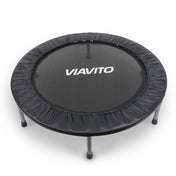There perhaps isn’t a sport in the world where the type of ball you use is as important as squash. Producing different levels of bounce and various speeds of play, the type of ball you need is directly affected by the ability of the player.
However, while the balls are conveniently colour coded to represent this, many aren’t aware of exactly what the colours mean. That’s why today we want to give you a quick lesson on squash balls.
We'll show you what options are available, explain the differences between them, and tell you who each one is best suited for. That way, you should have everything you need to pick the perfect ball and take your game to the next level.
Types Of Squash Balls
Blue
A blue squash ball has an extremely high level of bounce and produces quite a fast speed of play. It is ideal for use by beginners just getting into the sport, as well as those with less upper body strength, such as people playing at a junior level.
Red
Red is the next step up from a blue ball, featuring a high level of bounce that produces a medium speed of play. It is best suited for players who are still relatively new to the sport but who have started to improve and develop their own style.
Single Yellow Dot
Perhaps the most commonly used squash ball, the black ball with a yellow dot features very little bounce and produces a slow speed of play. It is ideal for slightly more advanced players, who have a full understanding of the sport and the best way for them to personally play it.
Double Yellow Dot
The last of the 4 main squash balls, the black balls with a double yellow dot offer extraordinarily little bounce and produce an extremely slow speed of play. These are best used by highly experienced players and is the type of ball used in almost all professional tournaments.
Green/White Dot
Considerably rarer than the four standard balls, a green ball with a white dot produces an average bounce, that offers a medium to slow style of play. It is best used by those who have advanced beyond the red ball, but don’t feel confident progressing to the black ball with a single yellow dot just yet.
Orange
By far the rarest of all the balls, the orange ball produces incredibly low levels of speed and bounce. It Is specifically designed to be used at high altitudes, so only a select few players will ever have the need to play with this type of ball.
Warming Squash Balls
Squash balls can be warmed in a number of ways, the most popular of which being to repeatedly volley it against the wall of the court. This improves the elastic quality of the ball, allowing it to bounce higher and faster. All squash balls can be warmed, no matter their colour grade.
Things To Consider
Bounce
The bounce of a squash ball will dramatically affect the speed of the game, so make sure you select one that produces a speed you are comfortable and capable playing at.
Speed
Closely related to the previous point, the bouncier a ball is the greater its speed will be. Make sure to choose the one you feel is most suitable.
Player ability
The more skilled a player is, the less bounce and speed they will want in the ball, as this makes the game more challenging. Be honest with yourself about your ability level when selecting your ball.
Your budget
Squash balls aren’t overly expensive even at the higher end of the scale. That said, they are an item you are going to go through quite quickly. If you play frequently and have a decent budget available, it may be worth buying in bulk, so you can get the best value possible.
Squash Balls Maintenance
There is nothing that can be done in terms of maintenance for a squash ball. They are designed to have a very short lifespan and will likely last you for only a couple of games.

